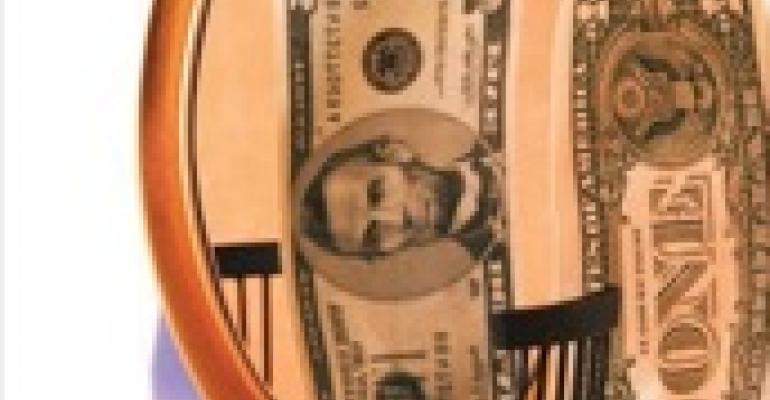 |
| UPON FURTHER REFLECTION: Be aware that customers may perceive menu prices in less-than-rational ways. |
No, the minimum wage hike passed by the U. S. House of Representatives hasn't become law. The Senate has yet to approve it, and President George W. Bush must sign it before the rate would jump from $5.15 per hour to a phased-in $7.25 two years down the road. But when it does, it will likely cause operators to embark on a wave of menu repricing unprecedented in industry history. Are you ready?
We hope so, because figuring out what the market will bear is problematic for full-service operators. Miss on the low side and your bottom line shrinks. Set prices too high and, well, "If you develop a reputation as being overpriced, that will be as hard to eradicate as a bad tattoo," says menu pricing consultant Dave Pavesic of the Restaurant Resource Group.
Wait a minute. If all you're trying to do is offset the minimum wage hike, do you really need an expert like Pavesic to help you set prices and otherwise tinker with your menu?
You might. Of note: some big chains classify pricesetting as a full-time gig. Last month, both Applebee's and Pizza Hut were advertising for experienced pricing pros on website CareerBuilder.com.
The listing for the Applebee's Sr. Manager for Pricing job says the company is looking for someone with seven years of experience in a pricing position. Duties include "synthesizing marketing and pricing information to draw insights and actionable recommendations;" and "pricing a portfolio of products, measuring pricing elasticity." Considering the financial impact the person's decisions will have on the company's 1,900 restaurants, this has to be one of the most important jobs at Applebee's.
The Pizza Hut Pricing Strategy Manager posting cites duties similar to the Applebee's job, only the person selected will have to factor in promotional TV pricing and coupon discounting strategies for the chain's 1,700 stores. Again, if this person gets it wrong, the whole ship could sink.
Your operation's menu, however, may just need a little tinkering to cover any labor cost increases that occur. Simply revisiting the basics might be enough to get you by.
Standard menu engineering theory holds that customers don't much notice incremental changes that only affect the two rightmost digits of a price: i.e., if a sandwich goes from $4.25 to $4.50, few notice that it did, and fewer still will change their purchasing behavior because of it. That's why the experts say your menu prices should end in .25, .50 and .75, or .95 or .99 and the like.
Retail pricing specialists say you can push this concept even further. They say it's a price's left digit that matters, no matter what is on the right.
"Let's say your item is $49.99 vs. $49," says Britt Beemer, chairman of consumer behavior study firm America's Research Group. "There is no perceived difference for most consumers between the two. The consumer looks at the dollar number and forgets the righthand digits—I would guess that only one of four consumers looks at those righthand digits."
So should you just round up every price on your menu to end in $.99 when the minimum wage increase kicks in? You could. But if you do, be aware of the findings of an Ohio State University study of full-service restaurant menu pricing.
OSU researchers found that higher-end restaurants prefer their menu prices to end in round numbers. Why? Round numbers denote "quality," $.99like numbers say "discount."
Menu pricing is both an art and a science. You'll need to tap your skills in both aspects when the federal minimum wage increase becomes law.
BRAND X PICTURES





